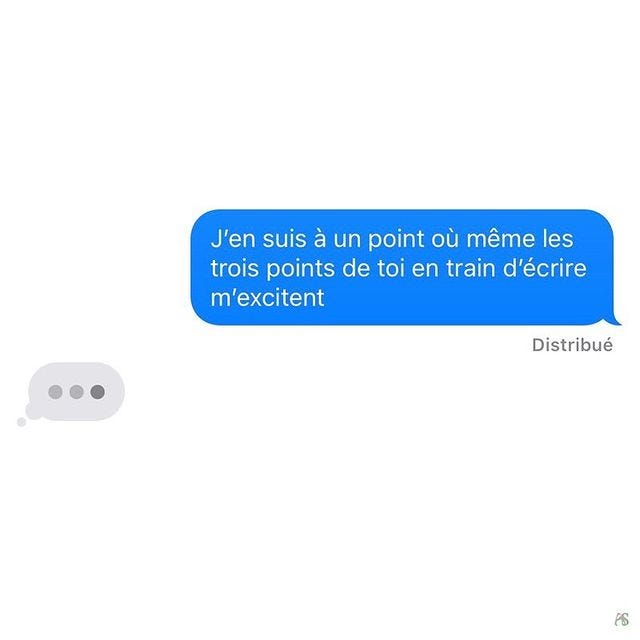A story of three dots and Typing Awareness Indicators
The three little dots in instant messaging, inspired by Jerry Cuomo and Richard Redpath, have profoundly impacted our social interactions. (Re)discovering their impact
In the late 1990s, Jerry Cuomo and Richard Redpath (IBM) created a tool that would profoundly impact our digital lives: the first 'Typing Awareness Indicator,' or the fact that now, in a chat, when a user types something, other members are aware of the action they are taking.
This tool was initially designed to prevent colleagues from yelling in the open space, 'Did you read my email?' However, this indicator quickly transformed into an expression of liveness, demonstrating the presence (or absence) of life in a digital environment.
The liveness—the quality or state of being alive—found its first tangible expression. Nowadays, these three little dots are part of our daily routines. They carry both an intention (the interlocutor is typing a message…) and a physical action (they are indeed 'doing' something with their hands). It's as if emails merged with the telephone, giving birth to a new space.
The foundations of vivance were laid in the late '90s. In France, it was probably MSN Messenger that had the most impact on our online conversations with chat rooms like Caramail. In 1999, an entirely new conversational architecture and new modes of interaction emerged for the general public.
'My France, it speaks in SMS, works through MSN
Reconciles via email and meets up via MMS.'
Diam's - Ma France - 2006
Features like 'wizz' allowed users to shake the other person's computer screen and play an alarm-like sound. The statuses of connected individuals (and those offline!) indicated who was active, who disappeared for too long, leading to a new perception of absence and presence.
The combination of emojis, visual cues, introduced a new writing rhythm. It also provided a more extensive means of expression, of self-discovery. Complex, joyful, and chaotic strategies showed that friction adds flavor to our digital exchanges. For example, starting a message to make a bubble appear on the recipient's side, or, conversely, marking a message as 'unread' on Instagram.
By 2004, 17% of instant messaging users used different screen names based on the group of friends or colleagues!
It was a time when we discovered that we could fall in love behind a screen but also that it was quick to get confused.
Instagram and TikTok in Full Retro Mode
At Meta, the latest announcements have a Y2K feel. On Instagram, users can now respond to 'notes' with audio clips, photos, videos, GIFs, and stickers. The 'inspiring statuses' with quotes from artists are making a big comeback, for better or worse!
After a media-centric phase on social networks that quickly demonstrated its limitations when the content wasn't interesting, there came the 'entertainment' wave and a considerable number of initiatives aimed at creating content akin to Netflix shows. The truth is that a crucial pillar is missing—the most important one, in fact—that explains why a user (human, virtual, brand...) explodes on social networks: the ability to be more alive than others, to spontaneously gather audiences who feel invested in what this user has to say. In other words, users who experience certain success are not necessarily desperate for attention but rather focused on establishing a form of respect, which involves the behind-the-scenes of social networks. The thousands of conversations with real people, projects that come to life (or fail) 'In Real Life.' The noise and the fury.
A capital that has infinite value, as Karen X. Cheng reminds us, opposing it to a frantic race after algorithms:
'Algorithms reward the extreme, and we have been pushed to the extreme.'
Karen X. Cheng
Meta seems to have heard the call of users and content creators through rather symbolic decisions. The 'shop' tab on the Instagram navigation bar was removed in 2023, and programs for creators are multiplying worldwide. It's not surprising that in its contest 'The Creators of Tomorrow,' Instagram added a category called 'IG Besties.' The definition: 'those who make us smile and shine while motivating us, just like our best friends in real life. These creators bring joy. They make you feel wrapped in a big hug and remind you that, thanks to them, you are part of a community and a safe space.' Is Instagram playing the cuddly card? Not sure, but in any case, the platform is focusing on areas of complicity... and love.
Above all, Meta accepts in its discourse that it is no longer the unique network where a captive user (sic) would live their entire internet experience, but rather a place of passage, an anchor, and sometimes the preferred place to talk to a certain type of people.




I hate you both and I hate those dots